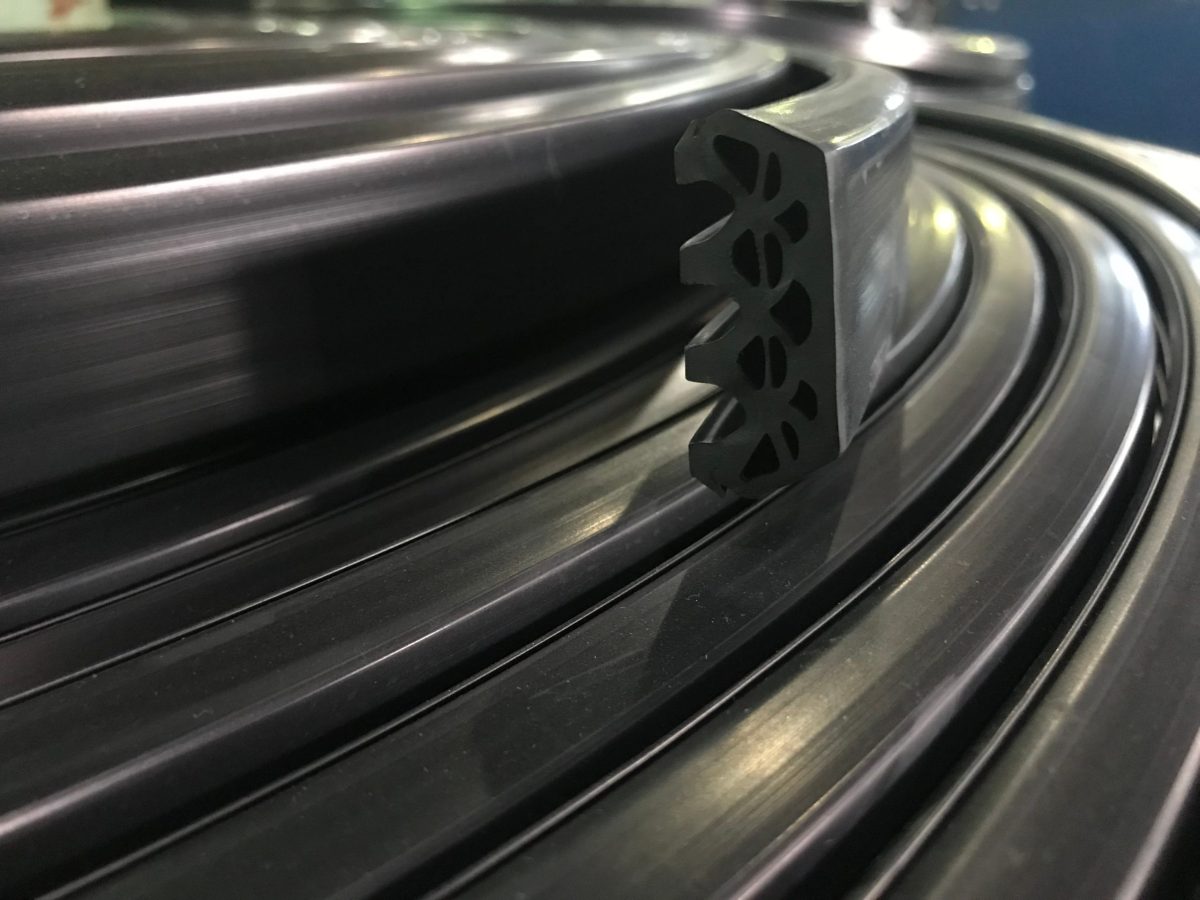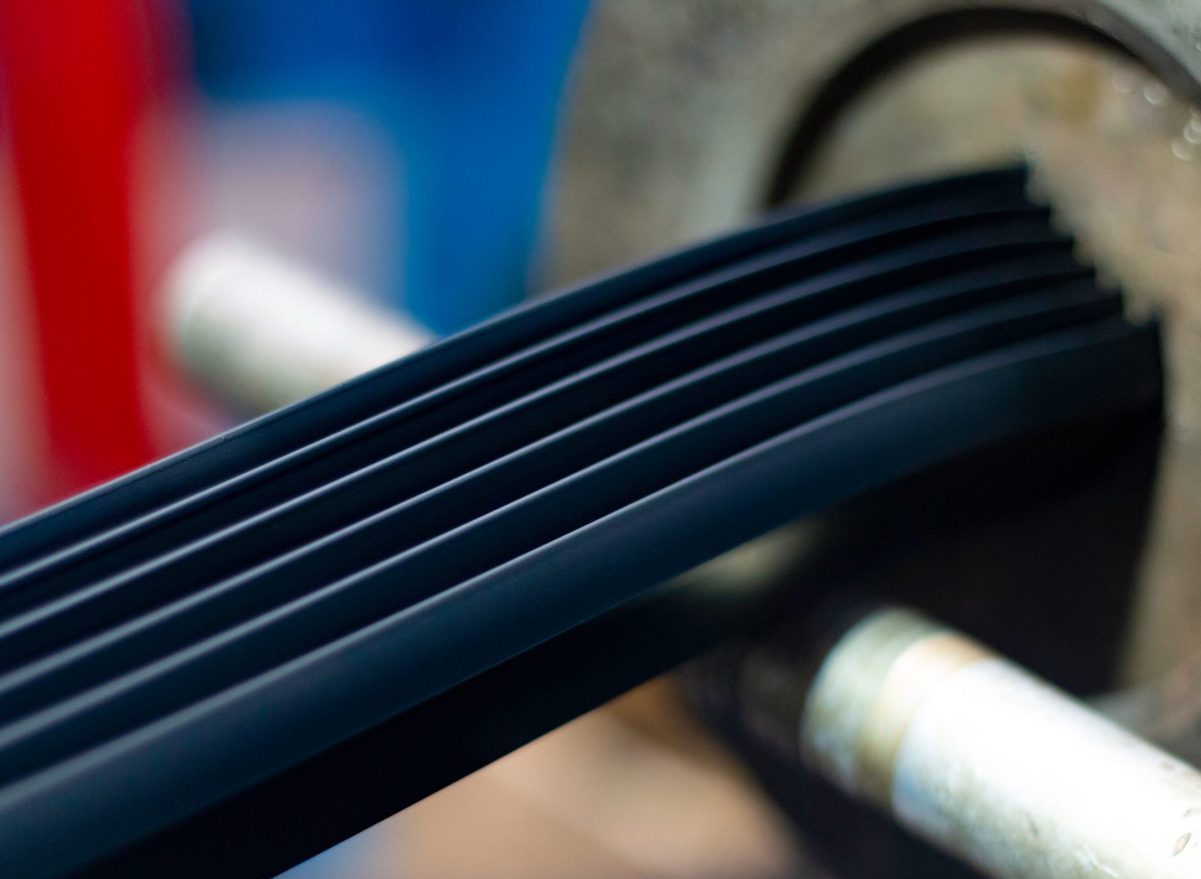Extrusion is the most suitable process for the manufacture of profiles and hollow gaskets. This is done by means of an extruder, a machine that presses the rubber compound through a extrusion die.
A picture is the best way to explain the extrusion process.
The revolving screw in the extruder is driven by the motor and feeds the strip of non-vulcanised rubber towards the exit of the extruder, where an extrusion die is fitted. The arising friction and high pressure make the rubber warm and soft.
The extrusion die, which is tailor-made for the customer, shapes the profile. The rubber emerging from the extrusion die is then vulcanised, forcing the molecules in the rubber to interconnect, and the profile obtains its unique properties. The rubber can be vulcanised in different ways; a salt bath (180°C to 240°C) or UHF (Ultra High Frequency) are generally used. In this way, the rubber profile can be vulcanised without using a mould.
The major advantages of rubber extrusion are its relative accuracy and the fact that very little residual waste is produced. Extrusion is an ongoing process which allows for fast and efficient production. There are many standard profiles that can be used for numerous applications. But, if your product is quite specific, we can develop a mould together so that the production process can begin and you can benefit from the exact rubber solution you require.
Hofland Rubber supplies rubber profiles in various shapes, sizes and compounds. We love special requests, which we consider to be a challenge, so we would be delighted to assist you in finding the perfect rubber solution.
If you are looking for a moulded rubber article or a cut rubber product you have also come to the right address: Hofland Rubber. If you have any other queries about our possibilities, please contact us. We would be delighted to deal with your queries.

